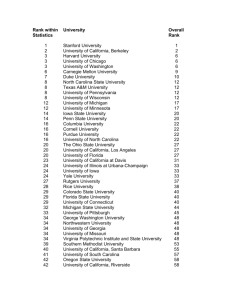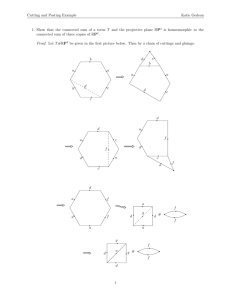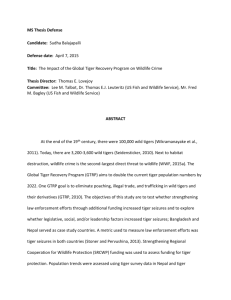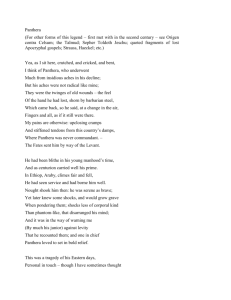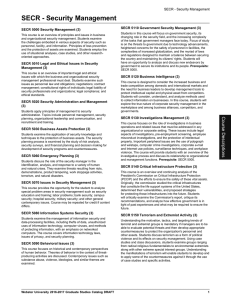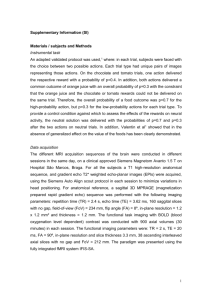Appendix S1 Estimating the population density of tigers In this study
advertisement
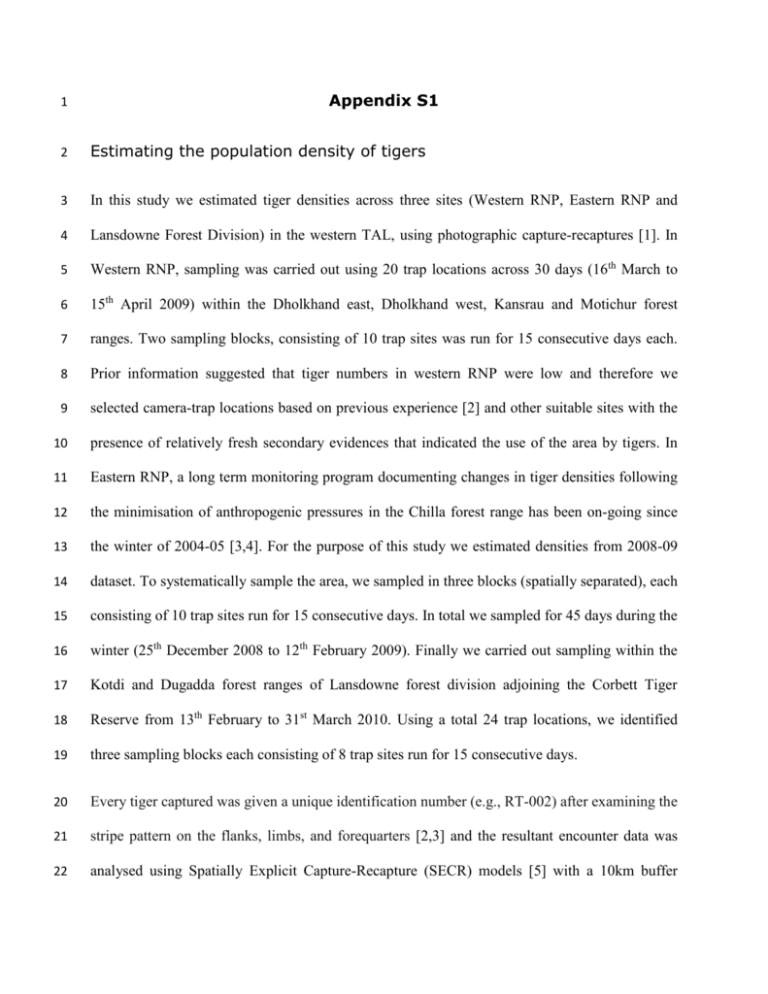
1 Appendix S1 2 Estimating the population density of tigers 3 In this study we estimated tiger densities across three sites (Western RNP, Eastern RNP and 4 Lansdowne Forest Division) in the western TAL, using photographic capture-recaptures [1]. In 5 Western RNP, sampling was carried out using 20 trap locations across 30 days (16th March to 6 15th April 2009) within the Dholkhand east, Dholkhand west, Kansrau and Motichur forest 7 ranges. Two sampling blocks, consisting of 10 trap sites was run for 15 consecutive days each. 8 Prior information suggested that tiger numbers in western RNP were low and therefore we 9 selected camera-trap locations based on previous experience [2] and other suitable sites with the 10 presence of relatively fresh secondary evidences that indicated the use of the area by tigers. In 11 Eastern RNP, a long term monitoring program documenting changes in tiger densities following 12 the minimisation of anthropogenic pressures in the Chilla forest range has been on-going since 13 the winter of 2004-05 [3,4]. For the purpose of this study we estimated densities from 2008-09 14 dataset. To systematically sample the area, we sampled in three blocks (spatially separated), each 15 consisting of 10 trap sites run for 15 consecutive days. In total we sampled for 45 days during the 16 winter (25th December 2008 to 12th February 2009). Finally we carried out sampling within the 17 Kotdi and Dugadda forest ranges of Lansdowne forest division adjoining the Corbett Tiger 18 Reserve from 13th February to 31st March 2010. Using a total 24 trap locations, we identified 19 three sampling blocks each consisting of 8 trap sites run for 15 consecutive days. 20 Every tiger captured was given a unique identification number (e.g., RT-002) after examining the 21 stripe pattern on the flanks, limbs, and forequarters [2,3] and the resultant encounter data was 22 analysed using Spatially Explicit Capture-Recapture (SECR) models [5] with a 10km buffer 23 around our trap array. We implemented this Bayesian analysis using programs R [6] and 24 WinBUGS [7]. We employed data augmentation with 100 ‘all zero’ encounter histories and with 25 10,000 iterations of Markov Chain Monte Carlo (MCMC) algorithm. The posterior parameter 26 estimates were generated from 8,000 iterations after discarding the first 2,000. In addition we 27 estimated population size using the most appropriate model in program CAPTURE [8,9] and 28 although Bayesian inferences of SECR models are robust compared to likelihood-based 29 procedure, especially for small sample sizes [5], we estimated closed population density using 30 maximum likelihood approaches (with a Half normal detection model) in the program Density 4 31 [10]. We do this so as to provide comparable estimates of density to those published recently by 32 Jhala et al. [11]. The parameter estimates are presented in Table 1. 33 34 Table 1. Summary of population parameters estimated from camera-trapping in the western TAL. THB I Western RNP Number of unique individuals identified 2 7 9 6 17 19 2 (0.3) 9 (0.9) 10 (1.6) 266 133 101 SECR Bayesian inference ̂ (SD) 𝑁 ̂ 𝐷 (SD) 7.1 (2.6) 1.1 (0.7) 38.1 (13.2) 5.5 (2.2) 60.2 (22.2) 6.2 (2.1) SECR Likelihood inference ̂ (SE) 𝐷 0.4 (0.1) 5.6 (1.6) 6.1 (2.3) Total number of captures Estimated population size (program CAPTURE) ̂ (SE) 𝑁 Effective trap area (km2) 35 Eastern RNP THB II Lansdowne FD 36 References 37 38 1. Karanth KU, Nichols JD (1998) Estimation of tiger densities in India using photographic captures and recaptures. Ecology 79: 2852–2862. 39 40 2. Harihar A, Prasad DL, Ri C, Pandav B, Goyal SP (2009) Losing ground: tigers Panthera tigris in the north-western Shivalik landscape of India. Oryx 43: 35–43. 41 42 43 3. Harihar A, Pandav B, Goyal SP (2009) Responses of tiger (Panthera tigris) and their prey to removal of anthropogenic influences in Rajaji National Park, India. European Journal of Wildlife Research 55: 97–105. doi:10.1007/s10344-008-0219-2. 44 45 46 4. Harihar A, Pandav B, Goyal SP (2011) Responses of leopard Panthera pardus to the recovery of a tiger Panthera tigris population. Journal of Applied Ecology 48: 806–814. doi:10.1111/j.1365-2664.2011.01981.x. 47 48 49 5. Royle JA, Karanth KU, Gopalaswamy AM, Kumar NS (2009) Bayesian inference in camera trapping studies for a class of spatial capture-recapture models. Ecology 90: 3233– 3244. 50 51 6. R Development Core Team (2009) R: A Language and Environment for Statistical Computing. 52 53 7. Gilks W, Thomas A, Spiegelhalter D (1994) A language and program for complex Bayesian modelling. The Statistician 43: 169–177. 54 55 8. Otis DL, Burnham KP, White GC, Anderson DR (1978) Statistical inference from capture data of closed populations. Wildlife Monograph 2: 1–13. 56 57 9. Rexstad EA, Burnham KP (1991) User’s guide for interactive program CAPTURE. Fort Collins, Colorado. 29 p. 58 59 60 10. Efford MG, Dawson DK, Robbins CS (2004) DENSITY: software for analysing capturerecapture data from passive detector arrays. Animal Biodiversity and Conservation 27: 217–228. 61 62 11. Jhala YV, Qureshi Q, Gopal R, Sinha PR (2011) Status of the tigers, co-predators, and prey in India. Dehradun. 279 p. 63
